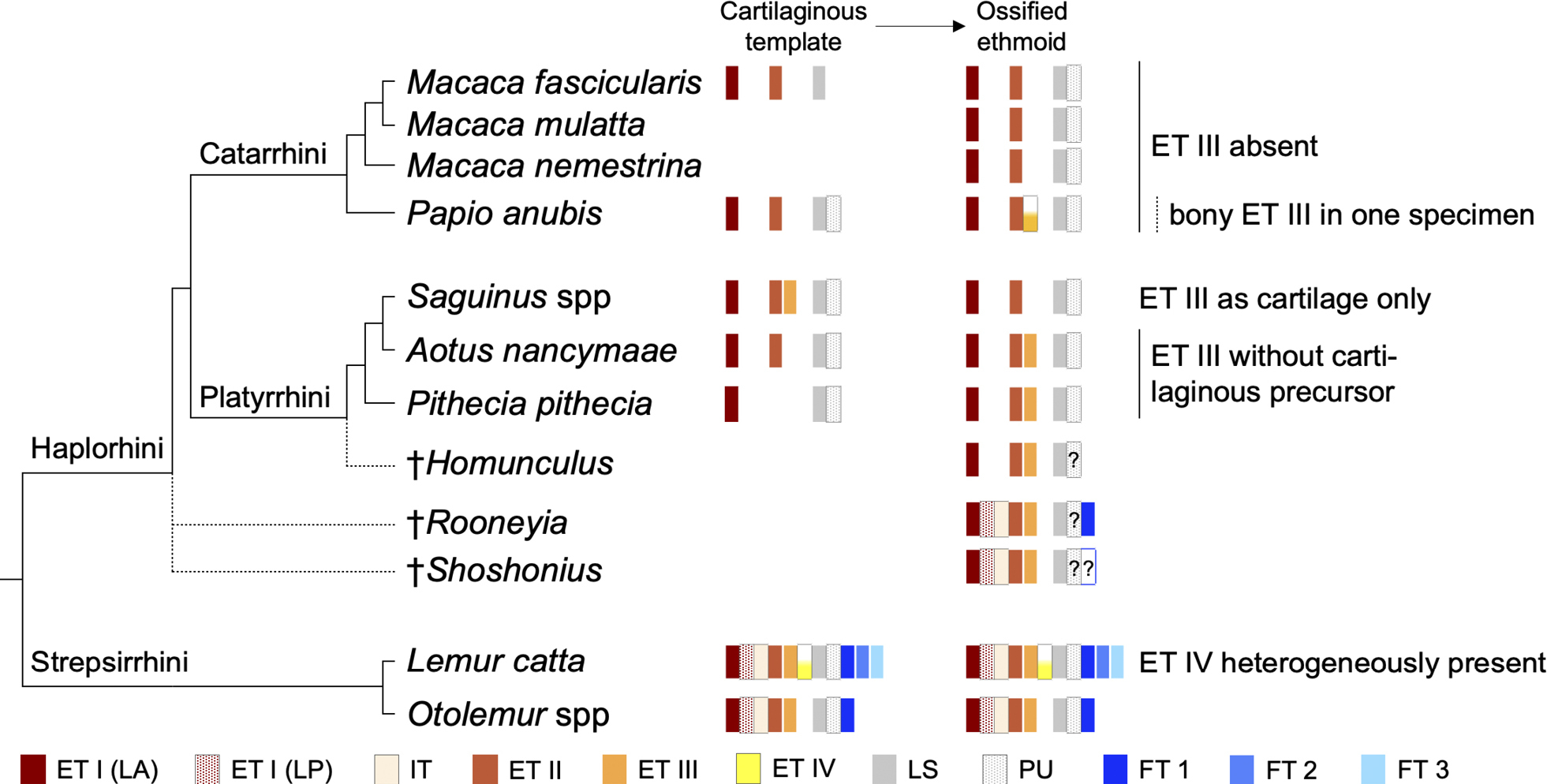
|
||
|
Phylogenetic tree (see Fig. 1 for reference) of the examined primates, that is expanded by three fossil species (dashed lines, topology according to Lundeen and Kirk 2019 for Rooneyia, Kirk and Lundeen 2020 for Shoshonius, and Lundeen and Kay 2022 for Homunculus). The presence of the turbinals within the cartilaginous nasal capsule during early development and within the ossified nasal cavity at late development are shown (for details on the individual age stages see Figs S15, S16). Strepsirrhines exhibit the plesiomorphic pattern of three ethmoturbinals (ET I to III; up to ET IV in some L. catta specimens) and one interturbinal (IT) between ET I and II. The plesiomorphic number of frontoturbinals (FT 1 to FT 3) remains yet unknown. In contrast, all haplorhines are recognized by the absence of all FTs, the IT, and the posterior lamina (LP) of ET I, which all have been present in stem haplorhines represented by Rooneyia (Lundeen and Kirk 2019) and Shoshonius (Kirk and Lundeen 2020). Whether the damaged pars lateralis of the examined Shoshonius specimen housed FTs cannot be assessed (Kirk and Lundeen 2020). The stem platyrrhine Homunculus housed three ETs in its nasal cavity (Lundeen and Kay 2022), whereas among extant platyrrhines ET III exhibits a markedly heterochronic pattern. The most distinctive observation is the presence of a third ET in the cartilaginous template of Saguinus, which is absent in the ossified ethmoid, and on the other hand the absence of ET III in the nasal capsule of Aotus and Pithecia, whereas a bony ET III-like lamina was identified after ossification of the nasal region has completed. The presence of an uncinate process (PU) in the fossils is not evident from the literature. Abbreviation: ET I (LA), lamina anterior of ET I. |